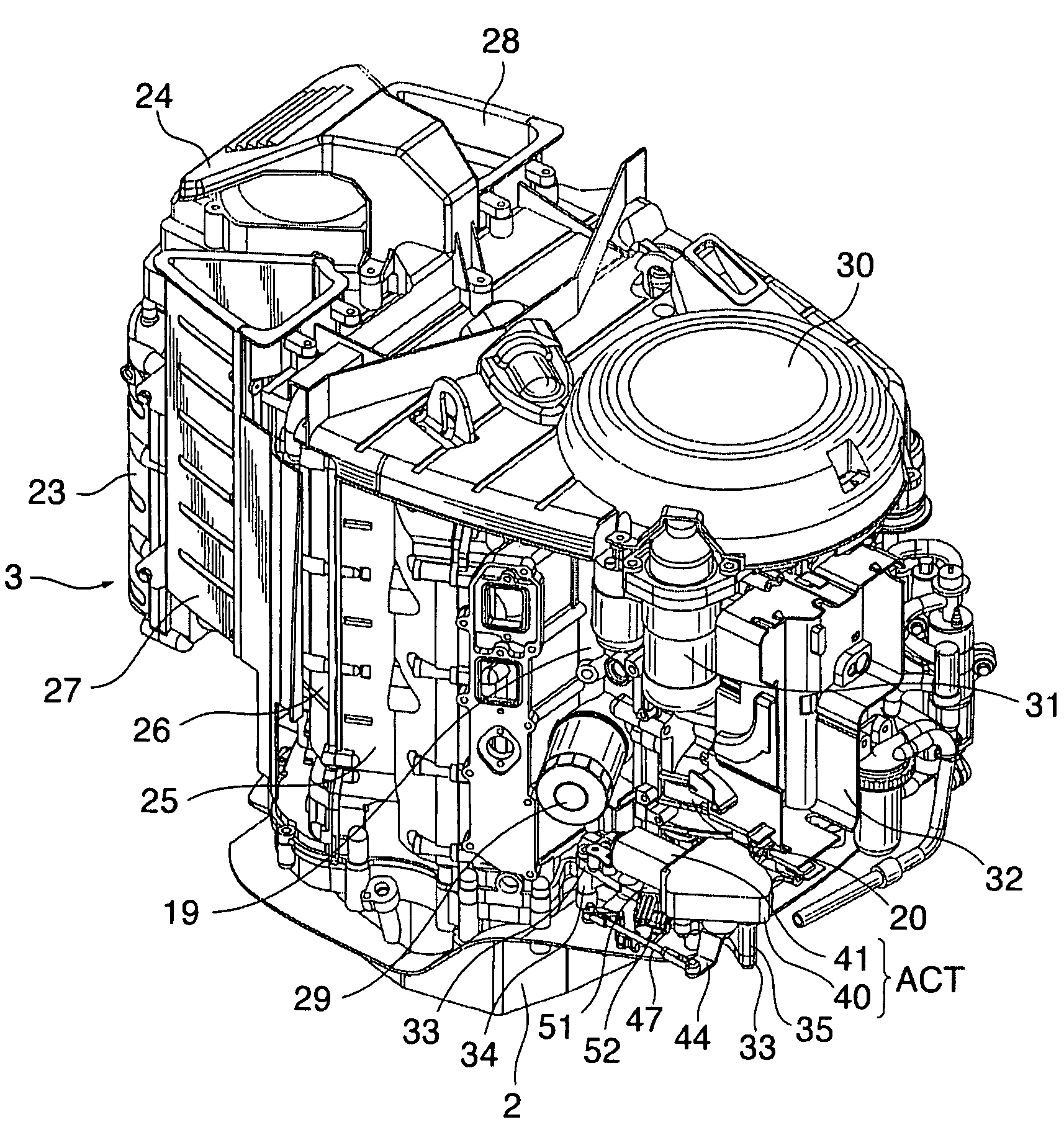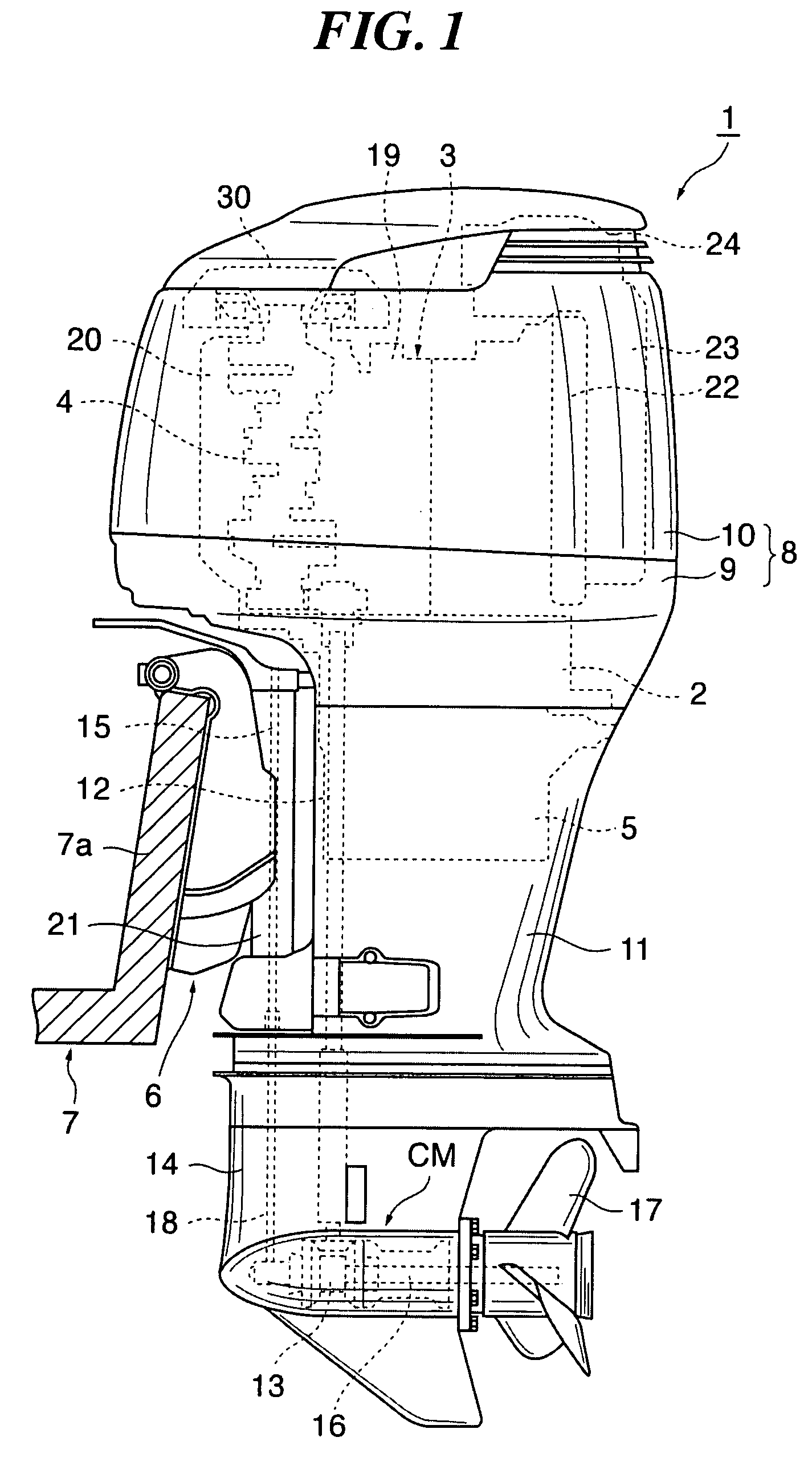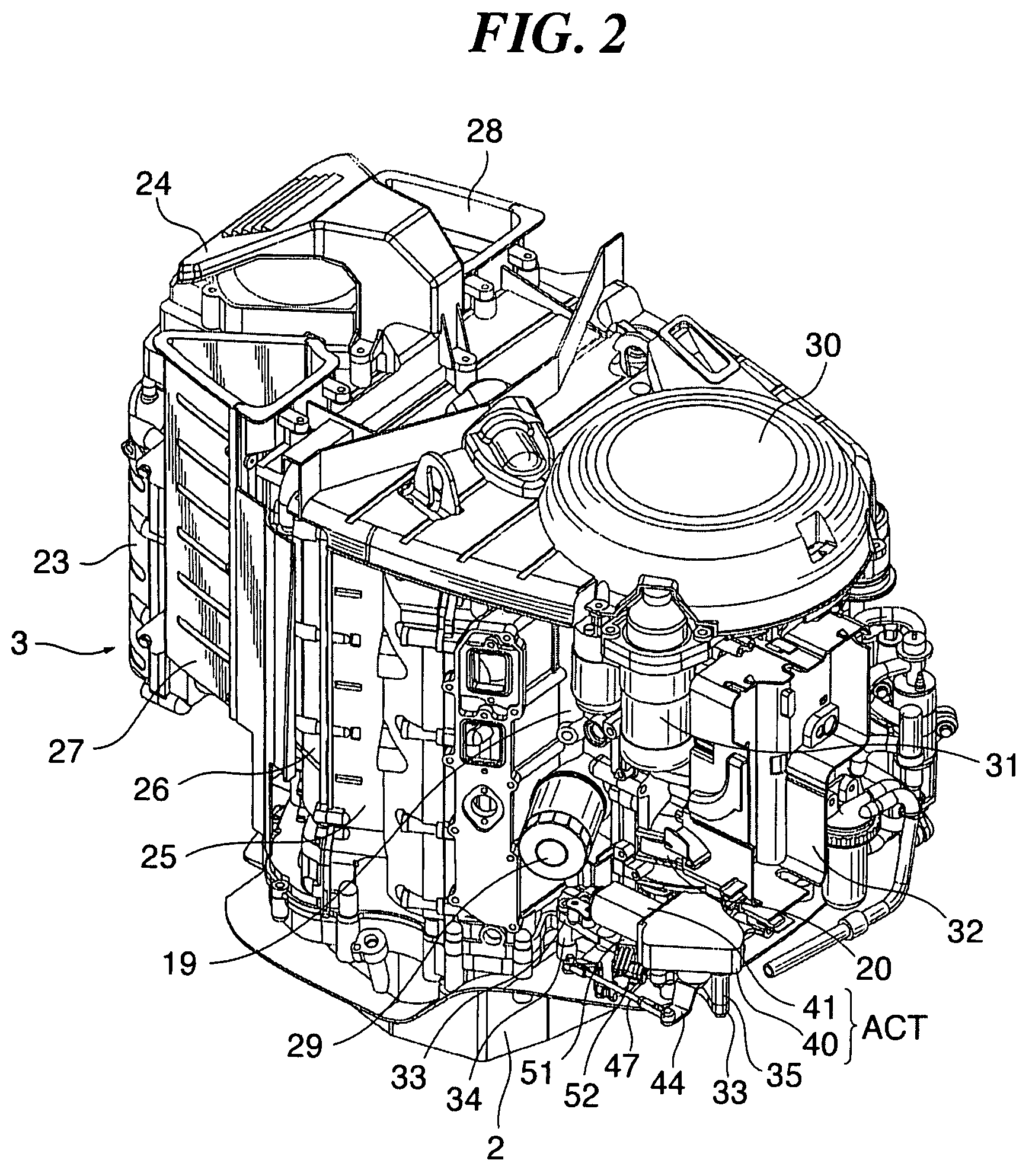Shift system for outboard motors
a technology of shifting system and outboard motor, which is applied in the direction of propulsive elements, marine propulsion, vessel construction, etc., can solve the problems of increasing the size of the whole shift system, increasing the size of the motor-driven shift actuator, and unable to meet the requirements of a conventional outboard motor. , to achieve the effect of reducing the siz
- Summary
- Abstract
- Description
- Claims
- Application Information
AI Technical Summary
Benefits of technology
Problems solved by technology
Method used
Image
Examples
first embodiment
[0039]FIG. 1 is a left side view of an outboard motor to which is applied a shift system according to the present invention.
[0040]The outboard motor 1 includes an engine holder 2, and an engine 3 installed on the engine holder 2. The engine 3 is a vertical-type water-cooled four-cycle six-cylinder engine having a crankshaft 4 substantially perpendicularly installed therein.
[0041]Under the engine holder 2, there is disposed an oil pan 5 for storing lubricating oil. The outboard motor 1 has a bracket device 6 attached thereto, and is mounted to a transom 7a of a vessel 7 via the bracket device 6. Hereafter, the ship side of the outboard motor 1 will be referred to as “the front”, and a side toward the viewer, as viewed in FIG. 1, as “the left”. Further, the sides in the vertical direction will be referred to with reference to a tilt-down state (state shown in FIG. 1) of the outboard motor 1.
[0042]An engine cover 8 covers around the engine 3, the engine holder 2, and the oil pan 5. The...
second embodiment
[0079]FIG. 10 is a right side view corresponding to FIG. 5 but showing a first example of application of a damper to the shift system according to the In this example, each of the bolts 36 is screwed into an associated one of the supports 35 from below the clutch base 33 via a spacer 67 and a damper 66.
[0080]This variation makes it possible to provide a damping or cushioning function between the clutch base 33 and the actuator body 40, thereby suppressing repulsion and the like adverse effect caused by the operation of the actuator ACT.
[0081]FIG. 11 is a bottom view of a right front part of an engine holder 2, which corresponds to FIG. 4 but shows a second example of application of a damper to the shift system according to the second embodiment. FIG. 12 is a cross-sectional view taken on line A-A of FIG. 11. In this example, a damper 70 is provided between the left end of the second link member 63 and the clutch rod 15.
[0082]One end of an arm 68 corresponding to the arm 65 (see FIG...
third embodiment
[0095]FIG. 16A is a bottom view of a right front part of an engine holder in the shift system which corresponds to FIG. 4, and FIG. 16B is a cross-sectional view of the upper front part of the engine holder.
[0096]In this example, as shown in FIGS. 16A and 16B, the position sensor 51 is disposed on the upper end of the clutch rod 15 and fixed to the engine holder 2. The position sensor 51 is disposed coaxially with the clutch rod 15, and is configured to detect the rotational angle of the clutch rod 15 in place of the rotational angle of the clutch shaft 60. It should be noted that the position sensor 51 may not be disposed coaxially with the clutch rod 15, but it may be configured and disposed such that the rotational angle of the clutch rod 15 can be detected via a gear or the like.
[0097]FIG. 17 is a cross-sectional view of the front part of the gear case 14, which shows a second example of disposition of a position sensor in the shift system according to the third embodiment. FIG...
PUM
 Login to View More
Login to View More Abstract
Description
Claims
Application Information
 Login to View More
Login to View More - R&D
- Intellectual Property
- Life Sciences
- Materials
- Tech Scout
- Unparalleled Data Quality
- Higher Quality Content
- 60% Fewer Hallucinations
Browse by: Latest US Patents, China's latest patents, Technical Efficacy Thesaurus, Application Domain, Technology Topic, Popular Technical Reports.
© 2025 PatSnap. All rights reserved.Legal|Privacy policy|Modern Slavery Act Transparency Statement|Sitemap|About US| Contact US: help@patsnap.com



